Protection for armored vehicles (Part 4)
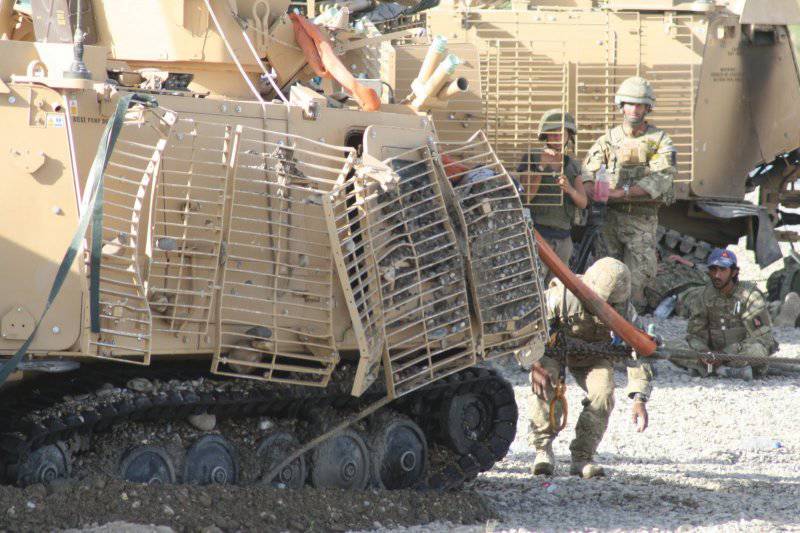
Damaged grille on a Danish car BV206. A lattice booking has an average threat stop probability of around 60%
RPG Protection
Around 40 countries use anti-tank rocket launchers (RPGs), which are manufactured in several versions by nine countries; estimated total production exceeds nine million systems. Therefore, it is not surprising that they have become one of the most common threats emanating from uncontrolled armies and terrorists in cities, as well as in open areas.
One of the most widely used solutions is to equip machines with systems that allow weakening or knocking down the cumulative jet created by the cumulative charge as much as possible. This can be done either by deformation or destruction of the liner, or by increasing the distance between the point of detonation and the plane of the armor, although in the latter case a lot of work will fall on the original armor of the machine. Some programs aimed at adapting basic combat tanks to urban warfare, showed that even the best MBTs of the Cold War era were not protected from the threat of RPGs on the sides, the main defense was concentrated on the frontal arc. Currently, two types of decisions have been made, the “cage” or “trellised” armor, which physically separates the attack projectile from the surface of the body, while the “mesh” options and the “energy” armor use materials with a low burning rate in different forms to defocus the cumulative jet .
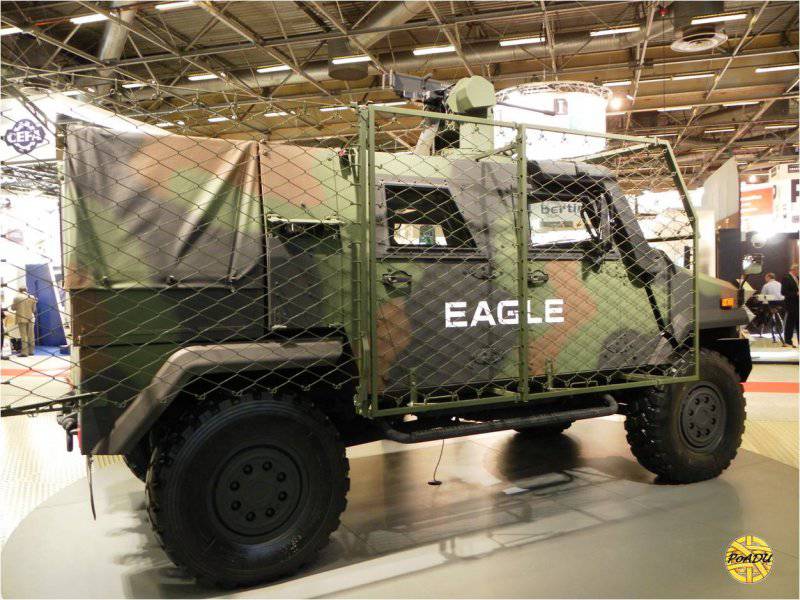
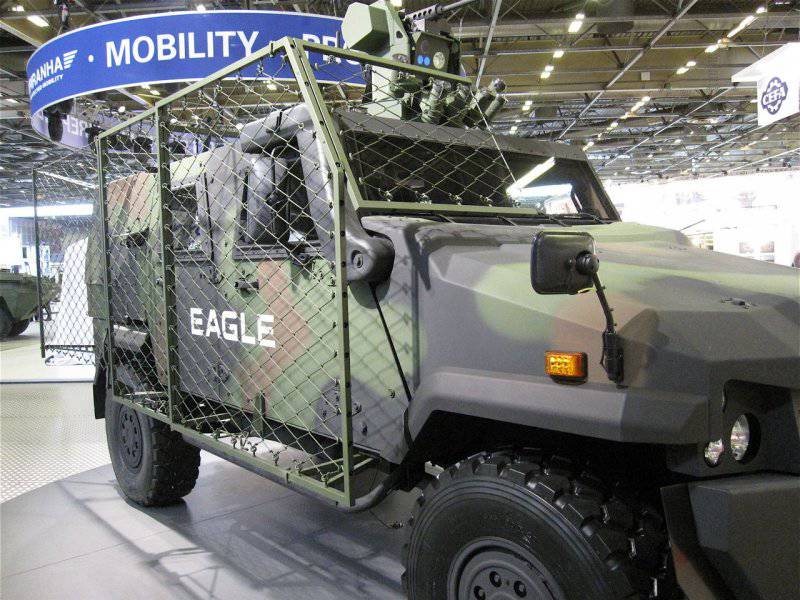
On the Eagle machine, the Ruag SidePro Lasso protection system is installed. It is designed to maximize machine access. The system is adopted by Denmark, Slovenia and Estonia
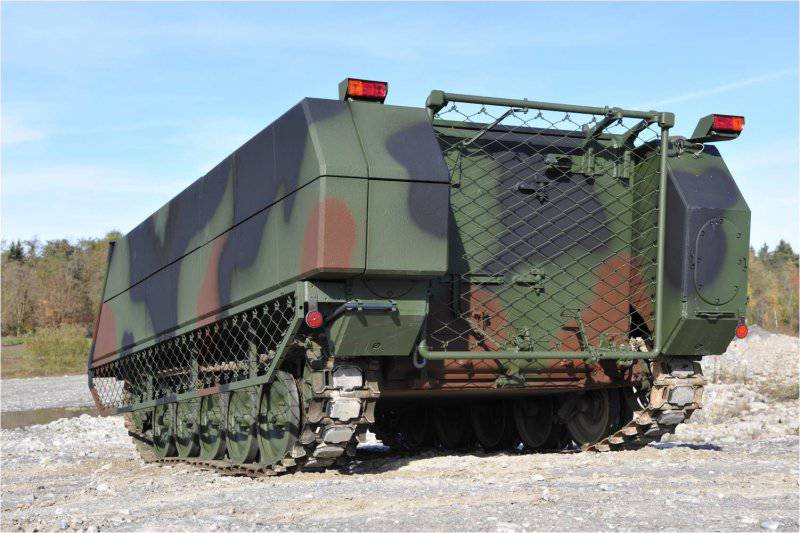

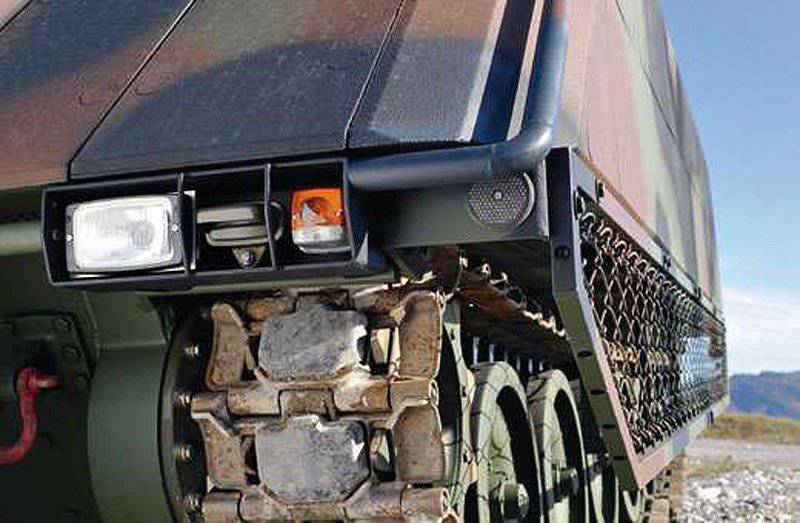
Ruag's SidePro RPG system in a new, much lighter version provides better protection than Lasso. Recently adopted by an unnamed buyer.
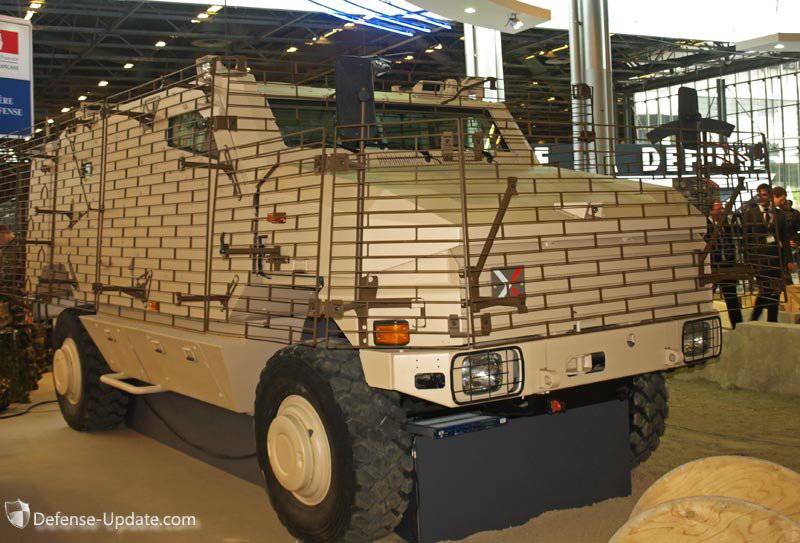
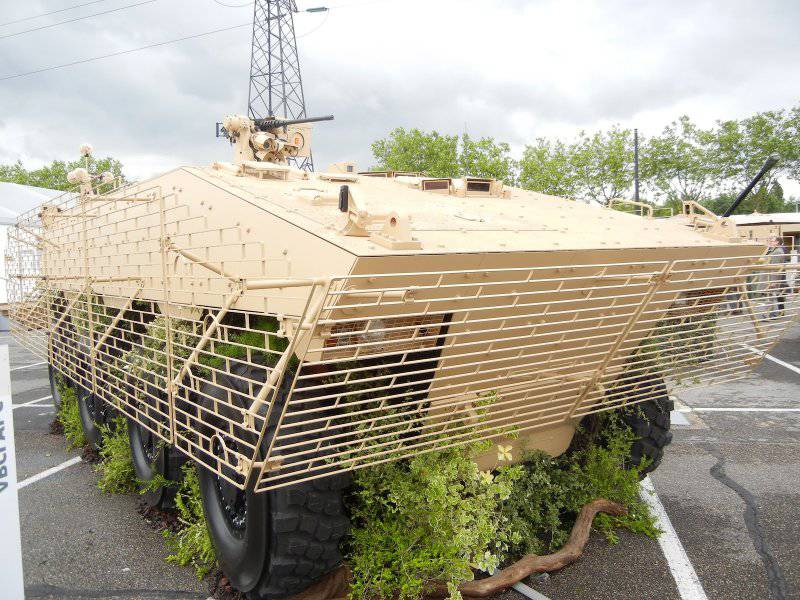
Nexter has developed its own grid armor for protection against RPGs called PG Guard. In the photos, the PG Guard system installed on the Aravis (above) and VBCI (below) machines. Its effectiveness is estimated at the level of 50 - 65 percent, depending on the type of attacking cumulative warhead
There is no final solution in any field. Lattice armor significantly increases the width of the vehicle, creating mobility problems in some urban scenarios. Being a statistical system, its effectiveness depends largely on the meeting point and the type of attacking projectile. Most systems have a high probability of neutralization or, accordingly, reduce the impact of an attacking RPG, and some of them can withstand very close (from each other) multiple hits. Not only solutions with the use of non-metallic materials in the form of nets are also available, but also mats (soft plates), which, accordingly, can stop the projectile without initiating it, although even questions about piercing statistics remain to them. The energy solution, based on armor modules attached to the hull, is not a probabilistic solution, since any place that the RPG falls into will react the same. In addition, it helps to protect against kinetic projectiles. On the other hand, it is necessary to take into account how damaged the surface of the energy armor is when the projectile strikes and thus how vulnerable its surface is for the next hit. The energy solution adds relatively little to the width of the machine, whereas the mass balance must be considered in each individual case.
The Swiss company RUAG Defense offers two different versions of the SidePRO system, designed to protect machines from RPGs. The most well-known version of SidePRO-LASSO is a network made of 4 mm wire from high-strength steel, which adds almost 6 kg / m2 to the weight of the machine and 250 mm to the side. Steel gained an advantage over woven material due to its resistance to external factors and greater operational durability. According to RUAG Defense, the optimized size and shape of the grid provide resistance to multiple hits along with a minimal decrease in the level of protection when an RPG hits the grid not at a right angle. The reduction of the protected area of the lattice armor by 1% is absolutely insignificant at the angle of attack 30 °. The first buyer was Denmark, which installed SidePRO-LASSO on its upgraded armored personnel carrier M113, deployed in Afghanistan. The experience gained in combat has led to the development of an integrated flexible mountable system and a “curtain” system, which improves serviceability. The transparency of the LASSO at the 92% level allows it to be installed ahead of the windshields with minimal deterioration in visibility for drivers. In the autumn of 2012, RUAG received two more orders, one from Slovenia to install the system on SKOV 8 × 8 Svarun (local designation of the Finnish Patria AMV), and the second from Estonia for its XA188 machines. Both countries have already installed these systems on their machines at the beginning of 2013.
The second system from RUAG is the SidePRO RPG. To date, a statistical system based on unbreakable technology and providing better protection than SidePRO-LASSO. The probability of damage reaches over 80% for all modifications of the RPG-7, it is approximately equal to the effectiveness of reactive armor, but with less weight and without indirect losses. An experimental passive type system with a specific mass of 45 kg / m2 was not sold to anyone. Further development has reduced the specific gravity to 30 kg / m2 (10% of the mass of the reactive solution). This option was qualified in 2012 year, after which the first contract was received from an unnamed buyer with deliveries scheduled for the 2013 year. Like the LASSO, the SidePRO RPG system increases the width on each side also by 250 mm. Interestingly, these two systems can be combined into a complete solution on a single machine.
In 2012, Nexter showed its RPG defense system in the form of trellised armor called PG-Guard. The 11 system is kg / m2, the rectangular cells forming each individual grid are arranged in the form of a brick wall. All elements of the system are made in the form of the machine. The design of the system provides the same level of accessibility: the panels are rotated together with the doors, and where there are service doors, quick-release panels are installed. This system is designed to neutralize the PG-7В, ПГ7-ВЛ and ПГ7-ВM missiles, its effectiveness ranges from 50 to 65 percent, depending on the type of rocket. The PG-Guard system can withstand two to four hits per square meter. Nexter estimates the time it takes to build and install a prototype on any machine, in two months, followed by mass production up to 50 kits per month.
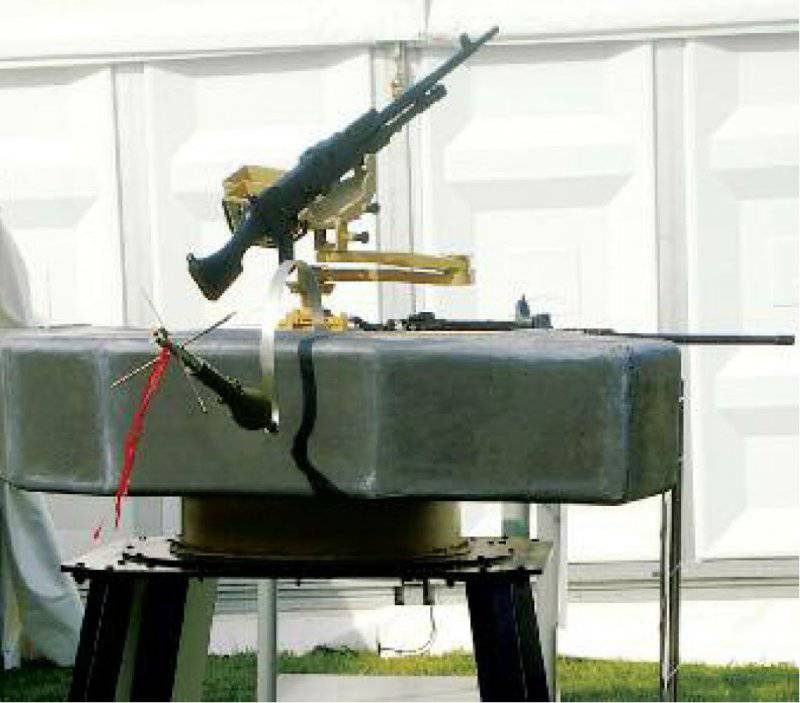
The defense exhibition shows the moment RPG attacks on an opaque version of the armor from the company Falanx Armor System. Falanx is waiting for the first customer and is open for cooperation.

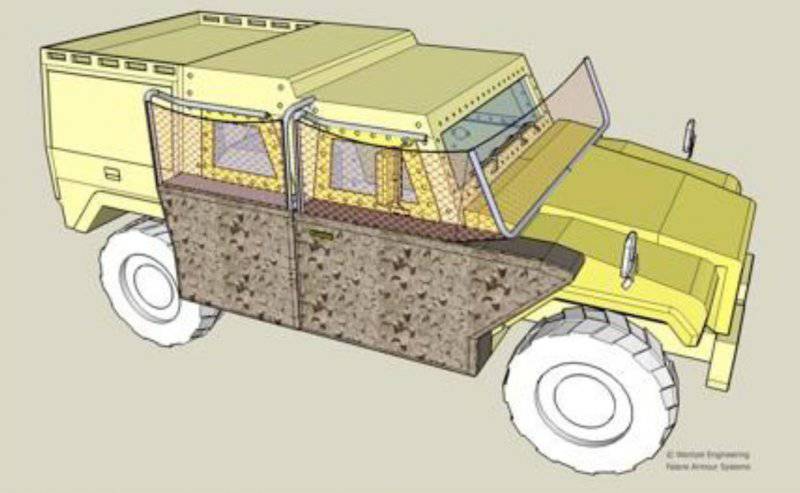
The collage at the top shows the Falanx solution installed on the Mowag Eagle, with mesh and opaque options to fully protect the vehicle; The figure on the right shows the effectiveness of this system on a Piranha. In the picture below, an artistic representation of the solution from Falanx Armor Systems
To combat the threat of an RPG, BAE Systems has developed an aluminum alloy L-ROD lattice armor kit, which reduces the weight by more than 50 percent compared to steel-based systems. Over 50 real shelling was carried out by the American army during acceptance tests. Panels are bolted to the machine and, therefore, easily replaced in the field. L-ROD kits are installed on various versions of military vehicles, mostly American, they are standardly placed on all Buffalo machines of the American army. Currently, over 1100 sets of L-ROD are installed on machines deployed in Afghanistan. To date, over 3000 L-ROD kits have been delivered. BAE Systems is currently working to further reduce the mass of L-ROD.
A small company from the Netherlands, Falanx Armor Systems, founded by Cyril Wentzel, develops RPG-7 protection based on a mesh design. The Falanx concept consists of a very lightweight grid that serves as the basis for highly effective neutralization of projectiles. A carefully designed and manufactured combination of high-performance fibers ensures the destruction of the RPG nose cone and warhead at an ultrashort distance. The main armor then stops the rocket and destroys it. The company advises to integrate this transparent grid option with an opaque flexible panel; This solution has several advantages with a small added mass. It is believed that the Falanx system provides at least the same level of protection as lattice armor; while its mass is less than 10% of the mass of lattice armor, the surface density is within 5-10 kg / m2, while the increase in width is approximately standard 250-300 mm. The basic design of the Falanx is standardized and available in unchanged form from the 2009 of the year. Grid designs with high performance and reasonable cost are also underway.
The truly high performance of the new type of grid confronts Falanx with the complex problems of manufacture and cost that it has to solve. The development of a new system is improved by advanced modeling, it also includes an improved diagnostic methodology for an objective assessment of statistical characteristics. This approach will fully meet the requirements of customers who need protection against a variety of threats, including RPG-7. Starting with a net protection performance indicator over 50%, the company aims to get as close as possible to the 90% mark. Although shelling of a specific Falanx product on a large scale has not yet been carried out, Falanx Armor claims that its technology is based on hundreds of experimental results of varying complexity, ranging from simple combat shooting to well-designed laboratory ballistic experiments on real RPG products. No products have yet been received by the troops, as the company is looking for the first customer or partner. Falanx Armor Systems also offers its services as a network protection technology consultant for the industry.
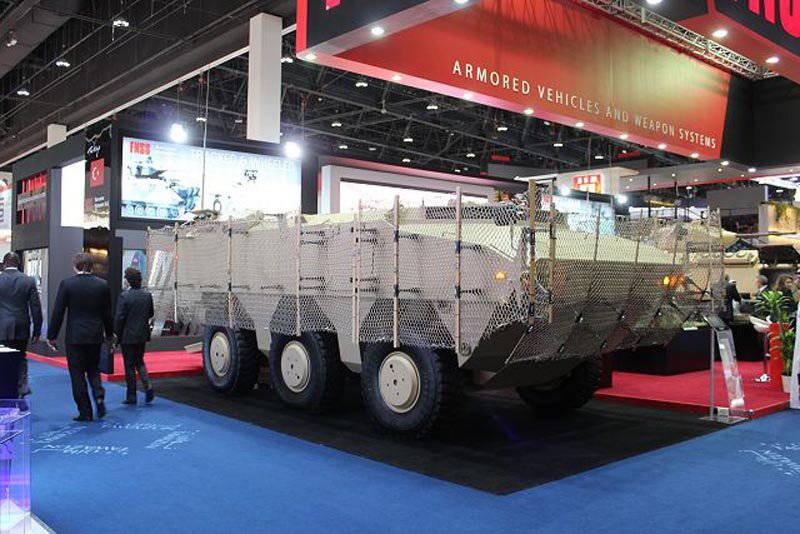
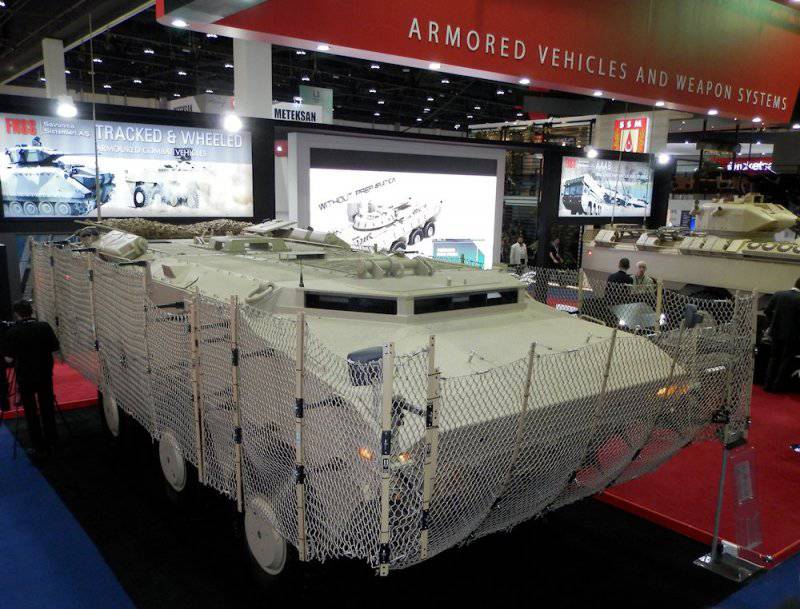
Grid Tarian RPG on the machine FNSS PARS 6x6; This network, installed on British Army vehicles in accordance with a recent contract, is also intended as a quick replacement for grid screens.
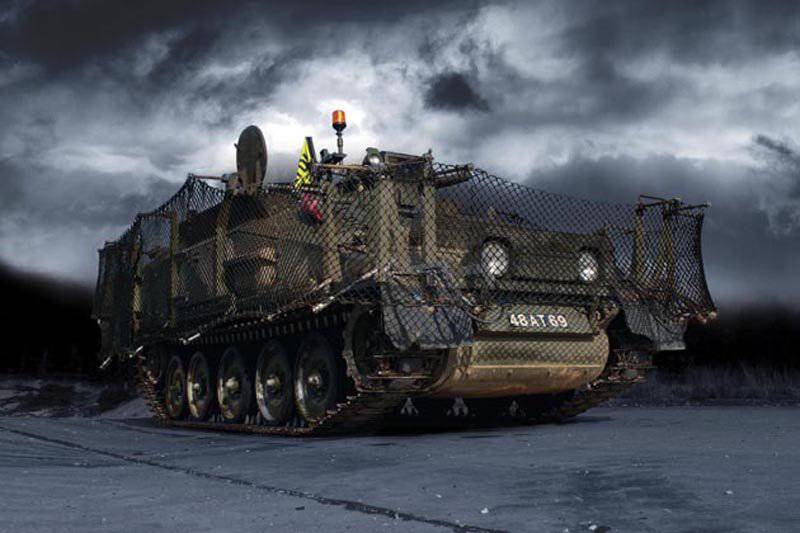
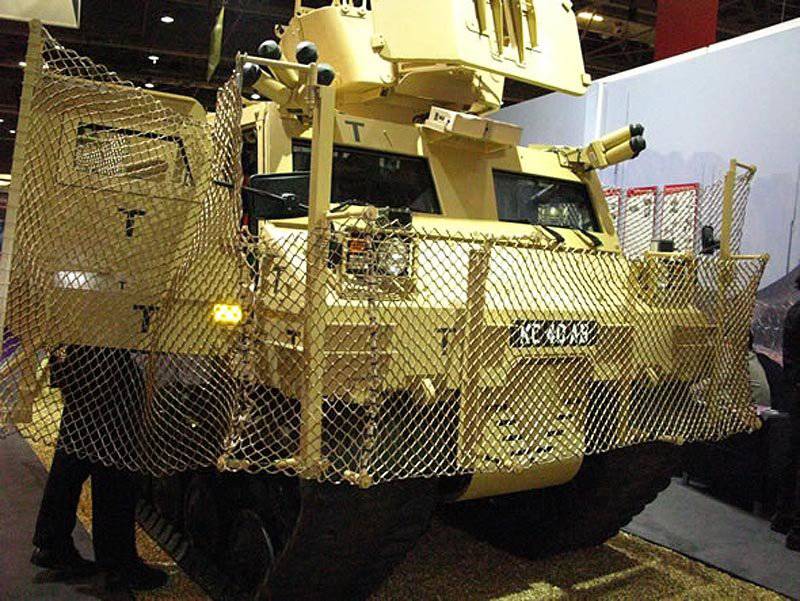
Examples of installing a Tarian protection system from AmSafe
Video demonstration of the Tarian RPG system developed by AmSafe
Using the experience of developing lightweight woven systems used in aviationAmSafe used fabric materials with high mechanical strength to develop an RPG protection system called Tarian (Welsh shield). The U.S.-British company worked on this system with the British Department of Defense: the British company in Bridport developed this product, and the production was entrusted to the plant in Phoenix, Arizona. At the initial stage, the material used made it possible to reduce the mass of the system by 50% compared to aluminum grating screens and by 15% compared to steel screens. Amsafe uniform fabric can be printed with camouflage patterns. The latest version of the mesh is mounted on a metal frame; the mesh cells are small enough to intercept the RPG and are able to stop the grenade at some distance from the hull itself. This technological breakthrough in woven materials allowed the company to declare a probability of interception of 94% and 98% respectively for aluminum and steel lattice armor. AmSafe's latest development is the Tarian QuickShield, a quick-fix solution for replacing damaged or lost trellised armor. The Tarian QuickShield mesh elements are similar to the Tarian system elements, available in sizes 1000 x 440 mm or 1700 x 1000 mm and can be quickly mounted on the remaining metal mesh armor. This system was installed in Afghanistan in May 2009 on British Army HET heavy trucks, after which Tarian won an additional contract in early 2013 to supply several hundred more systems. At the end of 2011, the US Department of Defense Advanced Research and Development Department Darpa tested another version of Tarian, integrated into the Traps (Tactical RPG Airbag Protection System - Tactical Air Cushion RPG Defense System) developed by Textron Defense. The original Traps system, developed for the JLTV program, was based on several commercially available radars. The radar identified an attacking threat, sending a signal to activate the corresponding module with an air bag, which was opened in the meeting area in the interval of about 50 ms. One module weighs approximately 15 kg and can be replaced in minutes. The inflated air bag creates the necessary operating distance for defocusing the cumulative jet. This system allows you to have a minimum increase in the width of the machine and to avoid interference with surveillance systems.
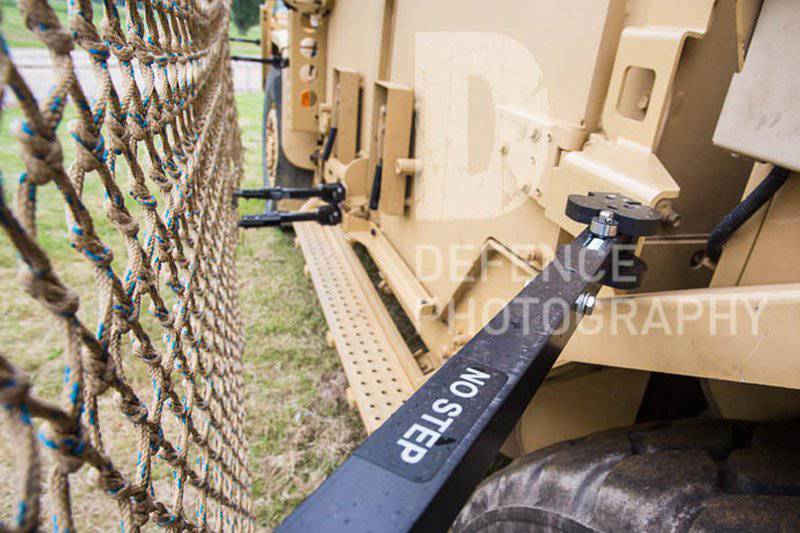
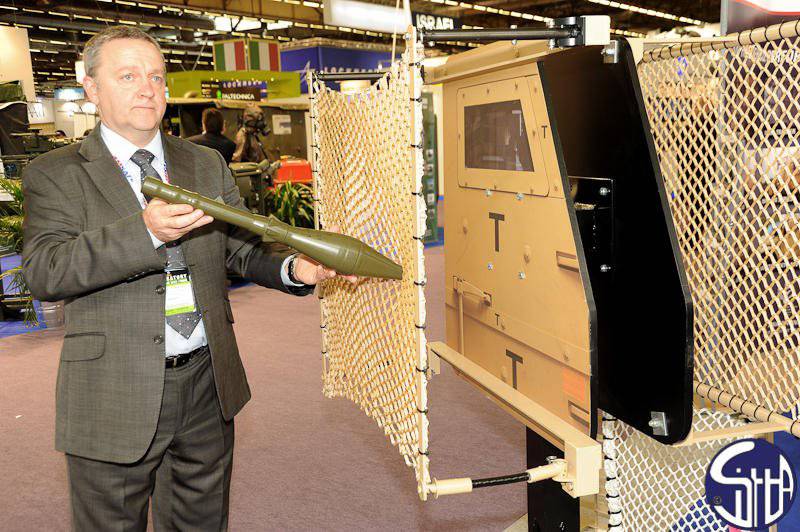
The network for protection against RPGs is made by the British company AmSafe; takeaway around the boards is about 250 mm, which is standard for similar systems. Below is the Tarian’s close-up at IDEX. The exhibition network for the exhibition was made of fake fabric to avoid industrial espionage.
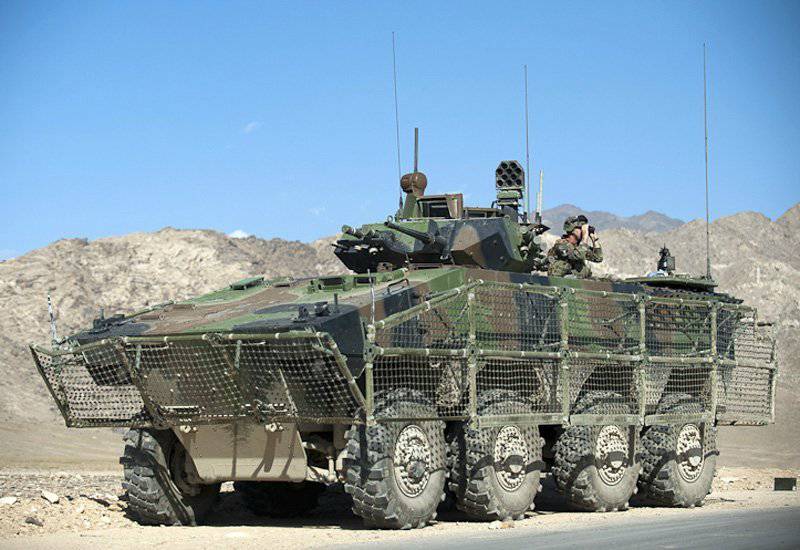
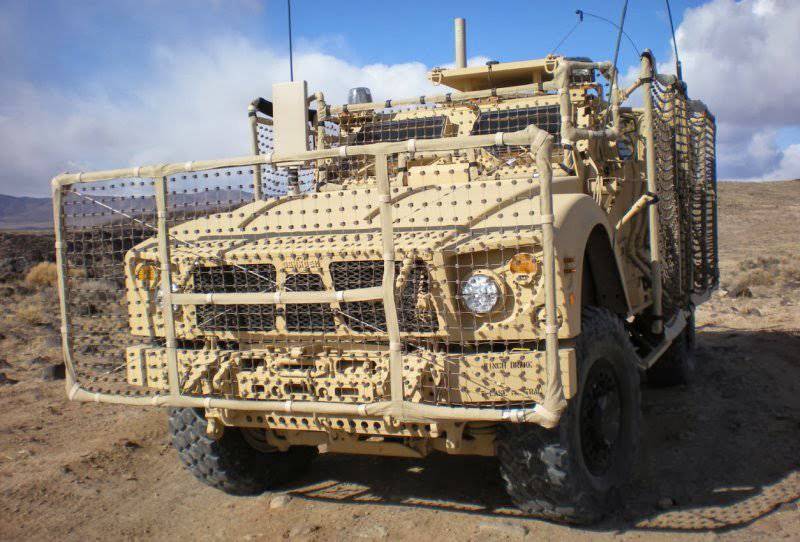
The VBCI machine of the French army in Afghanistan is equipped with a mesh system with embedded Q-Net metal nodes from QinetiQ North America. Q-Net system on Oshkosh M-ATV (below)
Another non-metallic solution was presented by QinetiQ North America in collaboration with Darpa and the Office of Naval Research. Kevlar-based Q-Net is a network with built-in metal assemblies, which, as stated by the company, provides higher performance compared to standard lattice armor with less weight on 50-60%. The metal frame allows you to keep the grid at a distance of removal from the body, this system can also provide circular protection in the upper hemisphere (due to installation on the roof). The system was installed on more than 11000 machines, including French VBCI and Polish Rosomak deployed in Afghanistan. At the beginning of 2012, QinetiQ NA showed Q-Net II, which, according to the company, differs in 15% in better efficiency and 10% in lower weight. An additional weight reduction was carried out due to the modified mounting of the frame to the machine, here the weight reduction was from 35 to 50% compared to the mass of the previous mounting of the Q-Net I.
The Israeli company Plasan Sasa developed the Ultra Flex Family (UFF), which includes three different solutions: the first is non-transparent non-metallic distance protection, the second is non-metallic translucent protection used for installation in front of armored glasses, and the third is a metal solution for installation in front of the driver window. The latter solution, known as SlatFence, is currently made of steel wire with an optimized cross-section, which reduces its weight to a minimum. The company Plasan Sasa believe that the driver must be a rigid structure, because a non-rigid solution, such as LightFence, will "float" in front of him, making driving impossible. In order to further reduce the mass of SlatFence and facilitate maintenance, the company is currently developing a version of the Hybrid, which reduces the mass by another 30%. It should be available soon. LightFence looks like a network with diamond-shaped holes, while vertical stripes go zigzag. The grid is installed at the same 160 mm distance as the opaque system of the family - FlexFence. Plasan Sasa aims at maximizing the effectiveness of RPGs by eliminating the initiation of the warhead in its translucent and opaque solutions: this means a short circuit of the piezoelectric ignition system during a collision that eliminates a warhead exploding, or in the event of a crash, causes only a secondary disruption that prevents the formation of a cumulative jet.

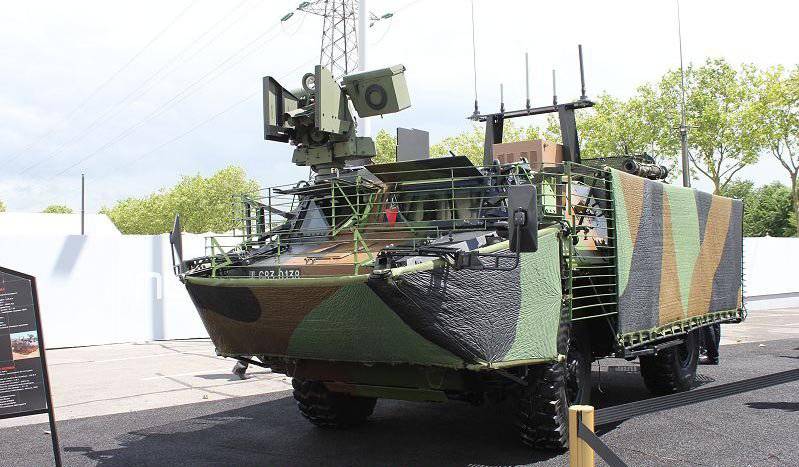
Renault Trucks Defense VAB Mk3 machine with various elements of the Ultra Flex family. This RPG protection system was developed by Plasan Sasa. At Eurosatory 2012 (bottom)
According to Plasan Sasa, ballistic results over 250 of grenades PG-7M, PG-7В and PG-7L grenades firing tests and advanced modeling and analysis using GSS (Gesamt-Schutz-Simulation) software developed by German company Condat showed a hit rate grenades up to 80%, 90% of which amounted to "silent" neutralization (the remaining 10% is forced neutralization, which causes secondary disruption). FlexFence has inherent multi-shock characteristics, each square meter can withstand up to six missiles. A damaged panel can be replaced in about five minutes. The FlexFence system was constantly evolving and the current version reached 10 kg / m2 mass, the improvements resulted in a small weight reduction and much greater durability. When designing, much attention was paid to cost issues, the savings were achieved not only due to weight reduction, but also due to secondary properties. Plasan Sasa is currently completing tests to confirm the benefits of reducing IR signatures. The company took up this issue at the end of 2012 after the first feedback from the customer who installed the UFF system in Afghanistan on their machines. This allows you to get numerous advantages, for example, to reduce IR signatures and improve the insulation system, which will reduce the time of the air conditioning system and, as a consequence, fuel consumption.
Protecting the top surfaces of vehicles becomes a common requirement, as RPGs fire from the roofs of buildings. An opaque surface with a set of camouflage patterns is available to customers, while it is non-flammable and provides UV protection. The FlexFence mat, which forms the ballistic module, is 50 mm thick and is installed in 160 mm from the body, which adds 210 mm on each side of the machine. The system can be installed on the platform in various ways: using existing frames, fastening with Velcro fasteners and / or cables, or using non-ballistic support panels and belts. The UFF protection system was shown at Eurosatory 2012 on a VAB 4 x 4 machine from Renault Trucks Defense.
The Israeli company does not rest on its laurels in the field of protection against RPGs. According to representatives of the company Plasan Sasa will soon show its lattice armor of the next generation. Details on it were not made public, but the new system should solve a lot of current problems, for example, cases when the car becomes a trap for soldiers after turning over. The company says that these works have made significant progress and the results are encouraging.
Plasan Sasa reservation solutions
Among the latest additions to the world of lattice and mesh armor is the folding lattice armor from TenCate Armor. This system was introduced at IDEX 2013; it is based on vertical steel cables with horizontal rods that can be easily attached to any frame and unfold if necessary. TenCate Armor is ready to refine this concept to customer specifications, using special materials to meet special requirements for mass and cost.
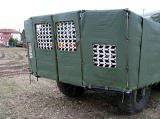
The rear view of the VAB Mk3 demonstrates transparent LightFence elements that are installed in front of the windows with the exception of the windshield. note. poor quality. And the more I did not find (((
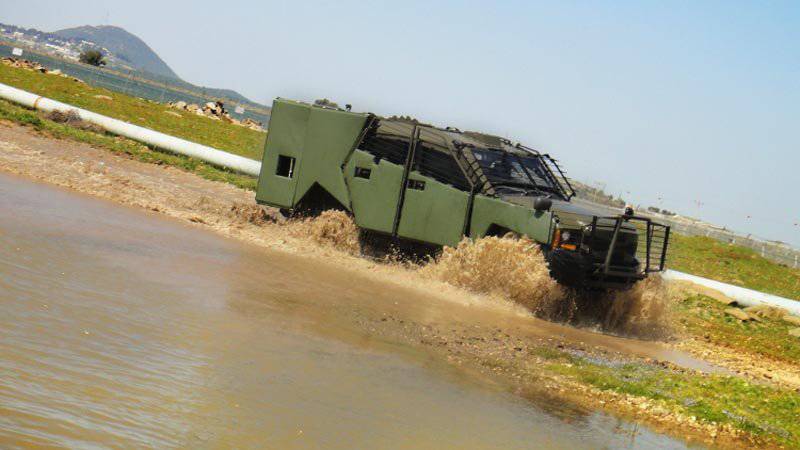

System of protection Ultra Flex Family (UFF) from the Israeli company Plasan Sasa
The American company Stronghold Defense solved the RPG problem in a completely different way by developing Phalanx Armor, based on the strategic integration of the geometric properties and properties of materials. The system combines spherical geometric shapes and composite materials - a new look at preventing casualties from cumulative grenades. A special combination of geometric shapes and materials was developed to minimize mass while providing guaranteed protection from the blast wave and radioactive radiation.
The Italian company Oto Melara worked on the RPG problem as part of the national defense technology R & D program. The surrogate threat of RPG was used in modeling and testing, because the company considered it more effective than the average RPG ammunition. An energy decision was made to simultaneously solve problems with the mass. The material enclosed in multilayer armor interacts with a molten cumulative jet, which is trying to pierce it. The energetic material effectively “defocus” the jet and distributes the energy of the warhead over a large area, significantly reducing its aggressiveness. A mathematical model with six degrees of freedom, designed to simulate the possible orientation of the jet, helped to identify and develop the metals and energy materials necessary for this system. In the course of development, interaction with various types of grenades and rockets was investigated, and as a result, the company received a patent for this system, which, according to official representatives of Oto Melara, is “highly competitive” regarding mass efficiency.
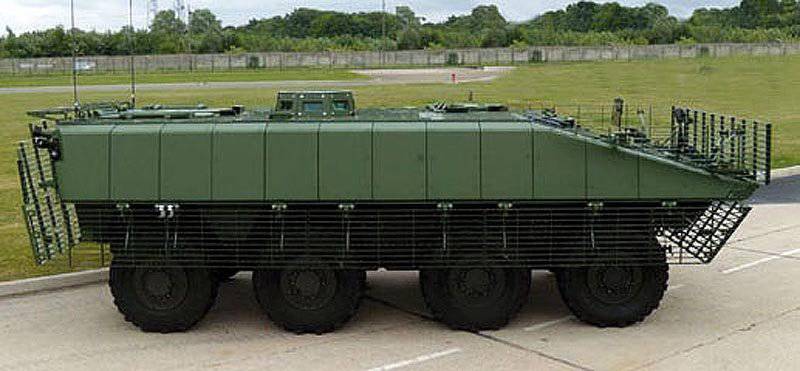
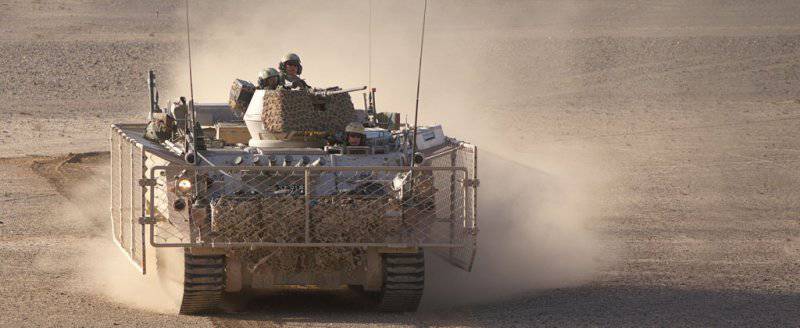
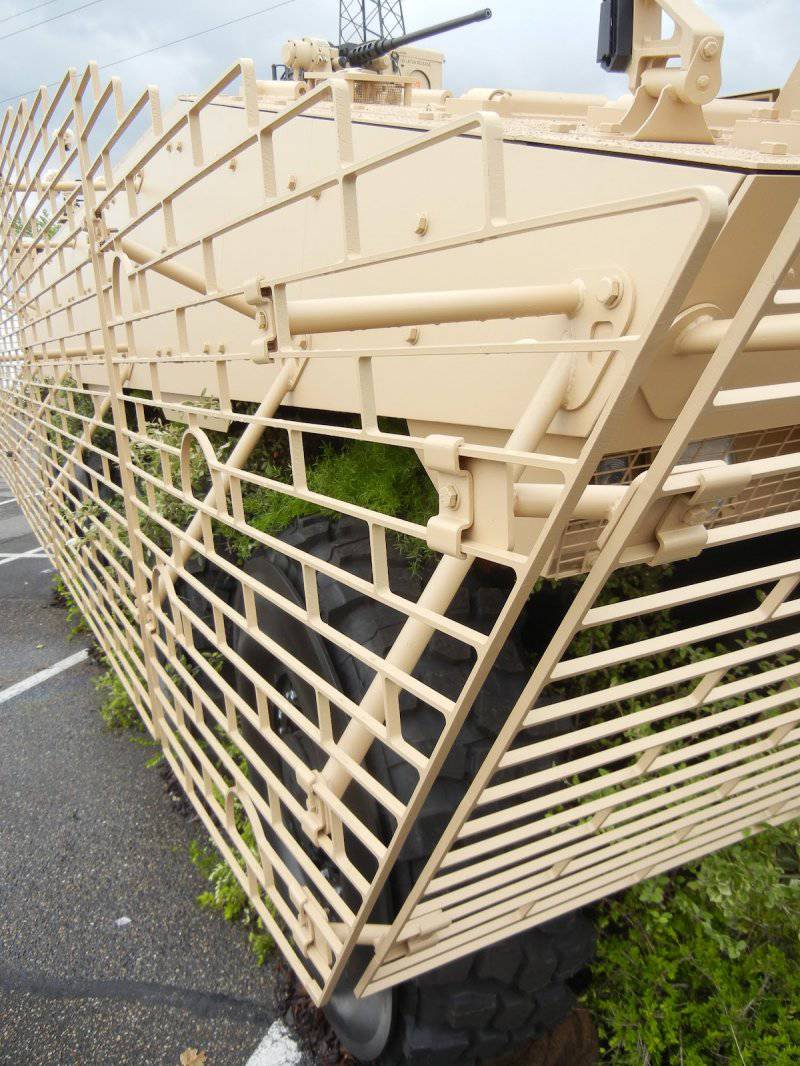
Information